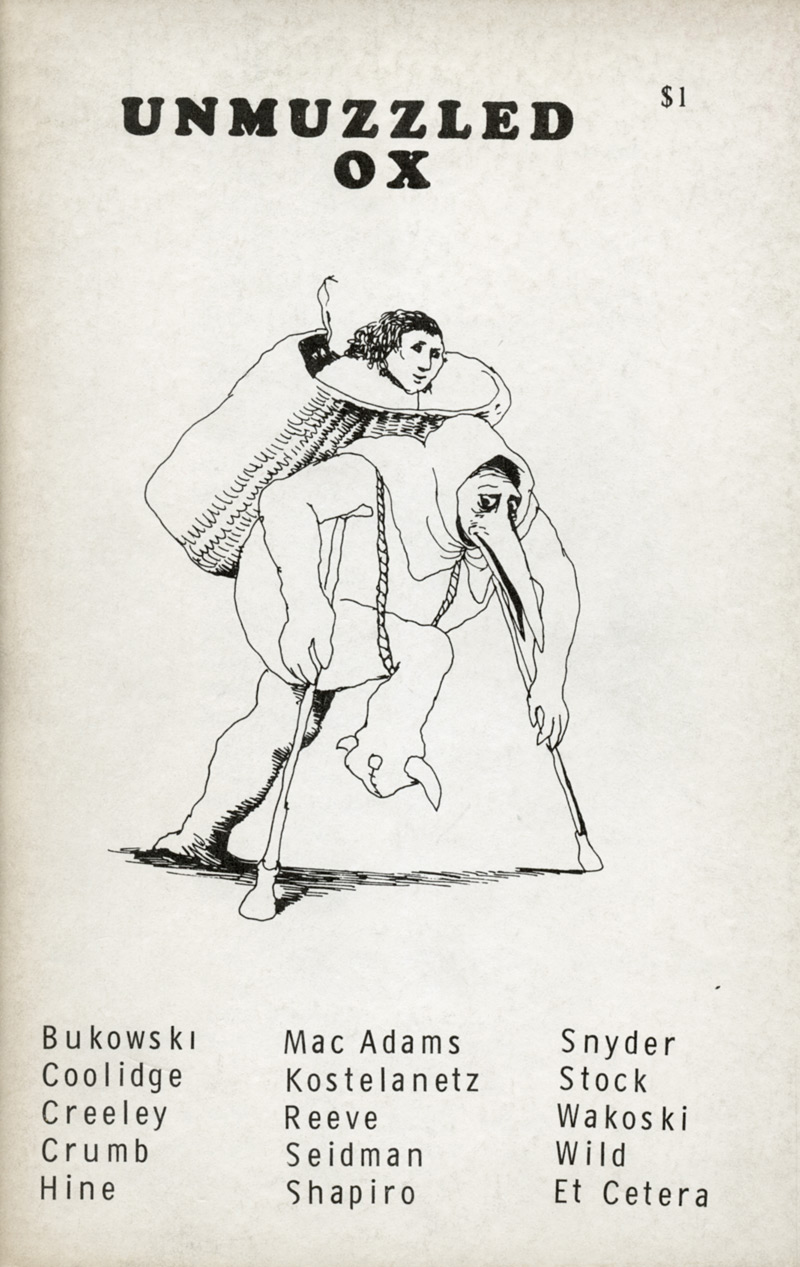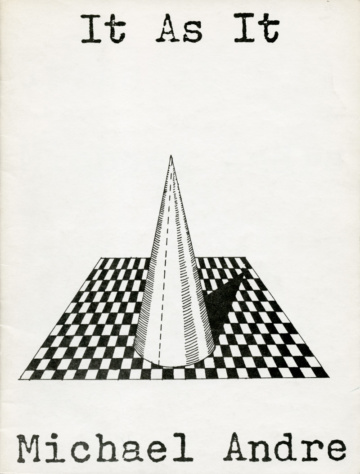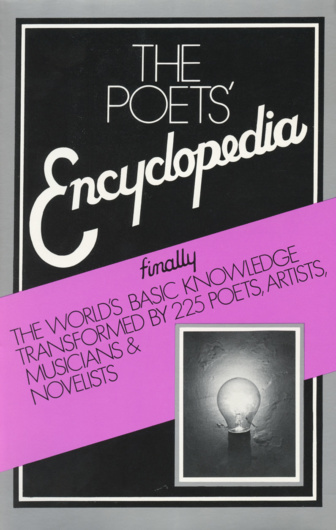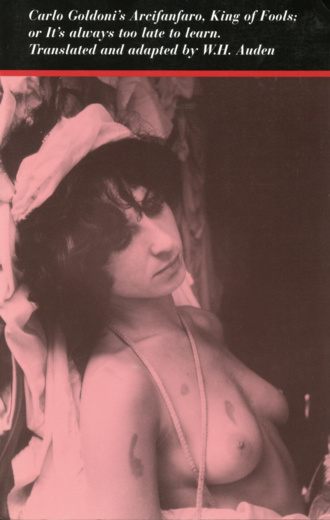Unmuzzled OX
Michael Andre
Kingston, Canada, later New York
(Erika Rothenberg co-edited The Poets’ Encyclopedia and Charles Henri Ford edited no. 26)
Vol. 1, no. 1–vol. 15, no. 4 (1971–2001).
Unmuzzled OX, vol. 1, no. 1 (November 1970). Cover by R. Crumb.

400 Words
When the first plane hit the World Trade Center I was a few blocks away, xeroxing John Cage’s various contributions to Unmuzzled OX. The xerox joint shook. “Gas explosion,” I thought. “Someone’s been careless.” I glanced out the window and saw flames. “Damn careless,” I added mentally but continued xeroxing. Cage is complicated and I had to concentrate. I didn’t give the first explosion another thought until the second plane hit.

Unmuzzled OX, vol. 13 (1981). It As it by Michael Andre, illustrated by Brian Buczak.
I had an 11:00 a.m. appointment with Colette that morning. Her art had illustrated the last issue of Unmuzzled OX, an opera libretto by Carlos Goldoni translated by W. H. Auden. We were going to sign and number an edition of 100. Colette and I cancelled. That, incidentally, was the second Auden OX. Laurie Anderson had illustrated the first; Laurie and I were friends at Columbia in 1972. But this was 2001. After talking to Colette, I stood on Hudson Street with a retired CIA agent who told me exactly what was happening. When the first tower fell, it scared the hell out of me. “Everything has changed,” I thought. “Things will never be the same.” And there would be no more Unmuzzled OX.
A few days later Daniel Berrigan, the Jesuit poet and activist, gave a speech in Washington Square. I had done a number of signed limited editions to raise money for Dan’s political endeavors. Allen Ginsberg regularly contributed his work and signature. The artist John Wesley did the covers and illustrations and also signed. In Washington Square Dan said, “Let’s rebuild the twin towers and call them Justice and Peace.” It sounded good at the time.

Unmuzzled OX, vol. 4, no. 4–vol. 5, no. 4 (nos. 16–20) (1979). The Poets’ Encyclopedia, edited by Michael Andre and Erika Rothenberg.
Unmuzzled OX began with interviews. In 1971 I interviewed Robert Creeley in Bolinas, CA, and gathered material from Charles Bukowski, R. Crumb, Gary Snyder, &c., for volume 1, number 1. Design was shaky. By the time I interviewed Andy Warhol in 1976 the design had begun to jump and dance. The best issue is generally considered to be The Poets’ Encyclopedia from 1979. “225 poets, artists, musicians & novelists transform the world’s basic knowledge.” Or so I wrote. Nobody in The Poets’ Encyclopedia mentioned Islam.
— Michael Andre, New York, February 28, 2017

Unmuzzled OX, vol. 15, nos. 1–4 (2001). Arcifanfaro, King of Fools; or It’s always too late to learn by Carlo Goldoni, translated and adapted by W. H. Auden. Cover by Colette.
Unmuzzled OX Checklist
Vol. 1, no. 1 (1971). No. 1. Cover by R. Crumb.
Vol. 1, no. 2 (February 1972). No. 2. Cover, logo, and illustrations by R. Crumb.
Vol. 1, no. 3 (Summer 1972). No. 3. Cover and stamps by Laurie Anderson.
Vol. 1, no. 3 (Autumn 1972). No. 4. Two editions: 1) One hundred copies in which Father Daniel Berrigan signs his suite of poems; John Wesley, the cover artist, signs his drawing; then signed and numbered on the last page by Father Berrigan, on 70-lb Kensington Laid-White paper. [Although not mentioned, Allen Ginsberg also signed.] 2) A second trade edition on regular offset paper in which the signature closing Father Berrigan’s poems is photomechanically reproduced.
Vol. 2, nos. 1/2 (1973). No. 5/6. Titled “Gregory Corso” on front cover. Two editions: 1) A first edition of thirty-five signed and numbered, with a drawing by Gregory Corso, and 2) a second trade edition.
Vol 2, no. 3 (1974). No. 7. Cover drawing is a sketch from a gouache by John Wesley.
Vol. 2, no. 4–vol. 3, no. 1 (1974). No. 8/9. The Japanese Notebook OX by Gregory Corso. Also known as Earth Egg. Accordion-fold booklet written and drawn by Gregory Corso, in cardboard box.
Vol. 3, no. 2 (1975). No. 10. Cover by Bockris-Wylie. [Note: p. 125 notes a signed limited edition of nos. 4, 5/6, and 8/9. Our 8/9 (second edition) does not mention the limited.]
Vol. 3, no. 3 ([1975]). No. 11. Yellow Flowers by Andrew Wylie. A flyer included with no. 11 reads “Before returning to our ‘review’ format, Unmuzzled OX is completing volume 3 with two books: Yellow Flowers by Andrew Wylie is no. 3 and Tropicalism by Kenward Elmslie is no. 4, or Unmuzzled OX 12.” Yellow Flowers was originally published by Dot Books, 1972; Tropicalism was originally published by Z Press, 1975.
Vol. 3, no. 4 (1975). No. 12. Tropicalism by Kenward Elmslie. Front cover by Joe Brainard, front cover photo by Gerard Malanga.
Vol. 4, no. 1 (1976). No. 13.
Vol. 4, no. 2 (1976). No. 14. Cover by Hannah Wilke.
Continue readingVol. 4, no. 3 (n.d.). No. 15. Cover incorporates a photo of Kiki by Brassaï. P. 135 notes limited edition of Earth Egg by Gregory Corso (8/9), edition of one hundred on special stock, signed and numbered by Corso with “Last Indian Poem.” Also indicates that no. 4 is signed by Allen Ginsberg, not mentioned in colophon of no. 4.
Vol. 4, no. 4–vol. 5, no. 4 (1979). Nos. 16–20. The Poets’ Encyclopedia. Available paperbound, in a hardcover library binding, and an edition of thirty-five signed by one hundred contributors. Edited by Michael Andre and Erika Rothenberg.
Vol. 6, no. 1 (Summer 1980). No. 21. “Unmuzzled OX removes a book’s cover, dresses it in a new jacket, and the book becomes a magazine. Mass publishers shred or dump in very little time the poetry they publish. It makes certain contemporary poets feel like Job.” No. 21 is Job Speaks, interpreted from the Original Hebrew Book of Job by David Rosenberg, Harper & Row, 1977. First edition, hardcover. From the back cover: “Job Speaks was printed by Harper & Row, neglected, then finally retrieved from that vast corporate state by Unmuzzled OX. The large publishers can sell any book that isn’t poetry. This ’recovery’ begins a series of ’recoveries.’ Job starts to speak: Rip up the day I was born.”
Vol. 6, no. 2 (Winter 1981). No. 22. Titled “Gregory Corso” on front cover. Edited by Michael Andre and Erika Rothenberg.
Vol. 6, no. 3–vol. 12, no. 1 (1984). No. 23. Back cover photo of Keith Richards by Gerard Malanga. The Cantos (121–150) Ezra Pound. [Note: The Cantos (121–150) Ezra Pound was available in three editions: four unbound tabloids, spiralbound, and casebound.]
Vol. 12, no. 2 (1986). No. 24. Cover portraits of Gerard Malanga and Cathy Aison, “waiting for Ezra Pound,” are by Diane Arbus. The Cantos (125–143) Ezra Pound.
Vol. 12, no. 3 (1988). No. 25. Cover by Gerard Malanga; other photos by Anne Turyn. “Ezra Pound’s Interview is Canto CXLV of The Cantos (121–150) Ezra Pound.”
Vol. 12, no. 4 (1988). No. 26. Cover, inside and out, by Mike Metz. Blues 10 CXLIV edited by Charles Henri Ford.
Vol. 13, nos. 1–4 (1990). No number. It As It by Michael Andre, illustrated by Brian Buczak.
Vol. 14, nos. 1–4 (1996). No number. Cover by John Wesley. “Jack Frost’s Canadian OX.” See “Catalogue Deraisonne” (p. 69) for useful listing of Unmuzzled OX publications, including Unmuzzled OX Festival at Attitude Art (a catalog) and Brian Buczak: A Memorial Exhibition catalog.
Vol. 15, nos. 1–4 (2001). No number. Arcifanfaro, King of Fools by Carlo Goldoni, translated and adapted by W. H. Auden. Front cover “The Death of Marat, After David” by Colette. Back cover by Sharon Gilbert, “Mad and crazy, all.”
